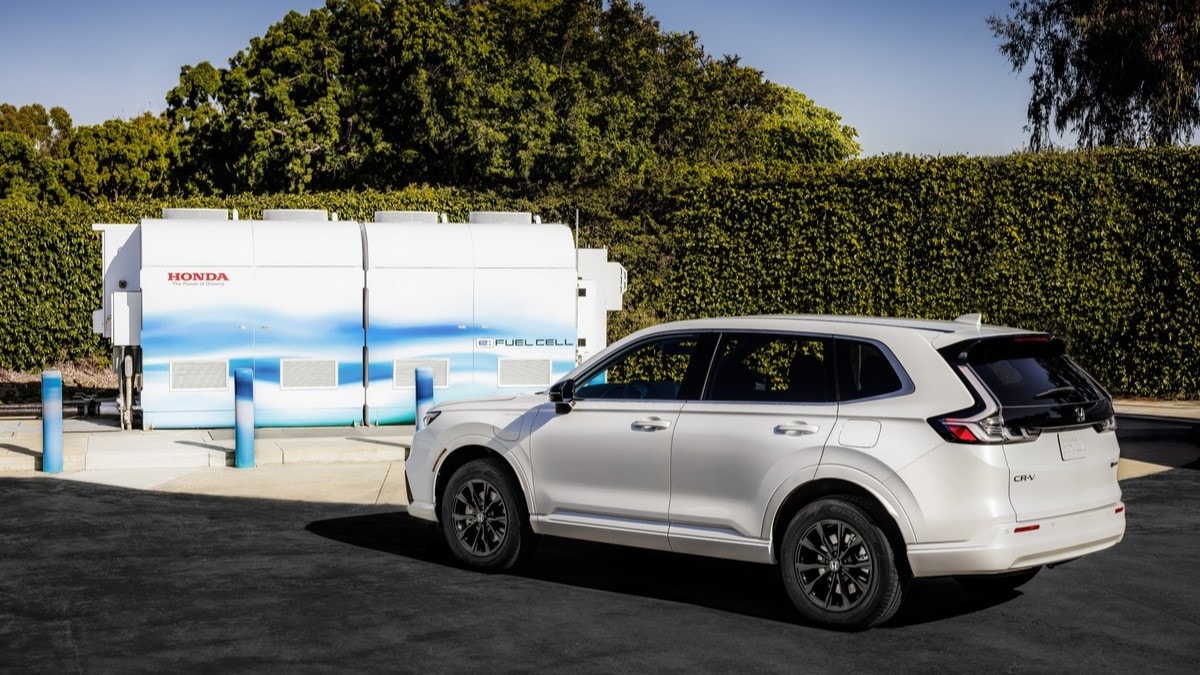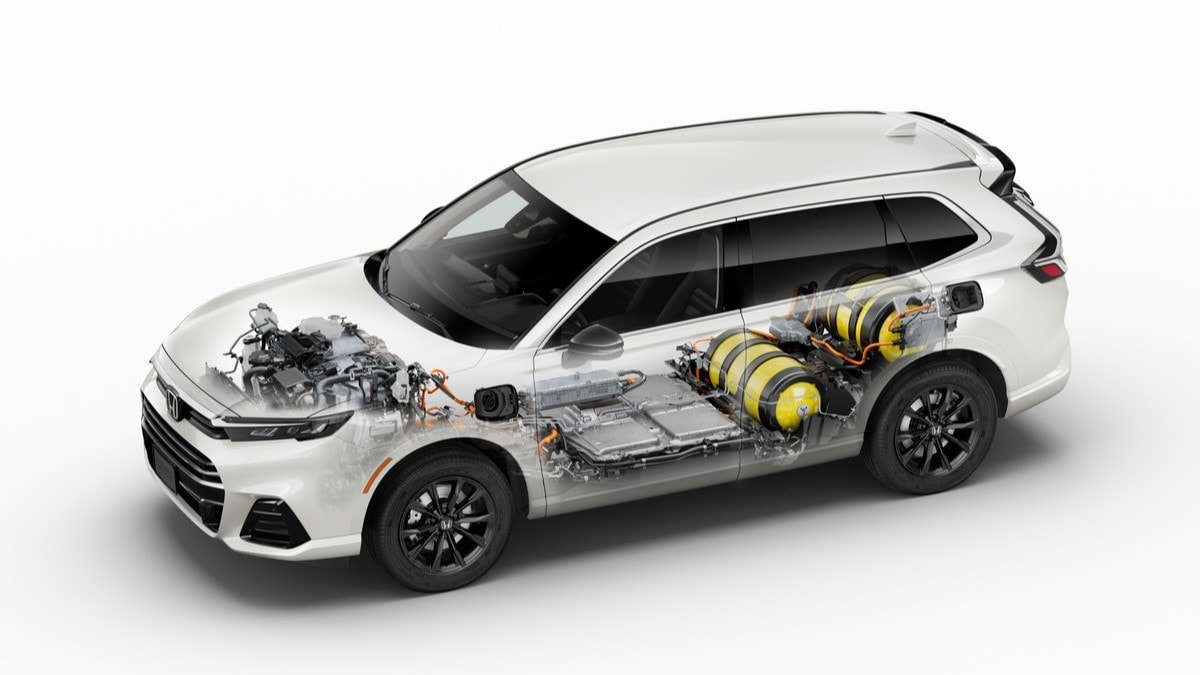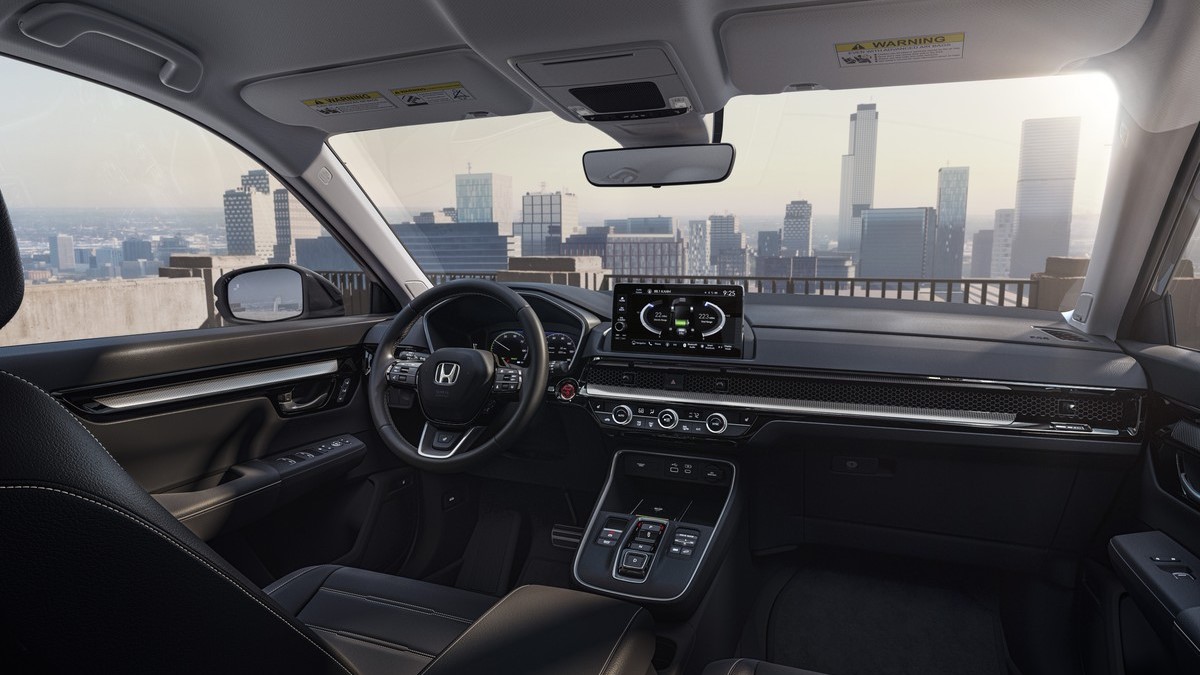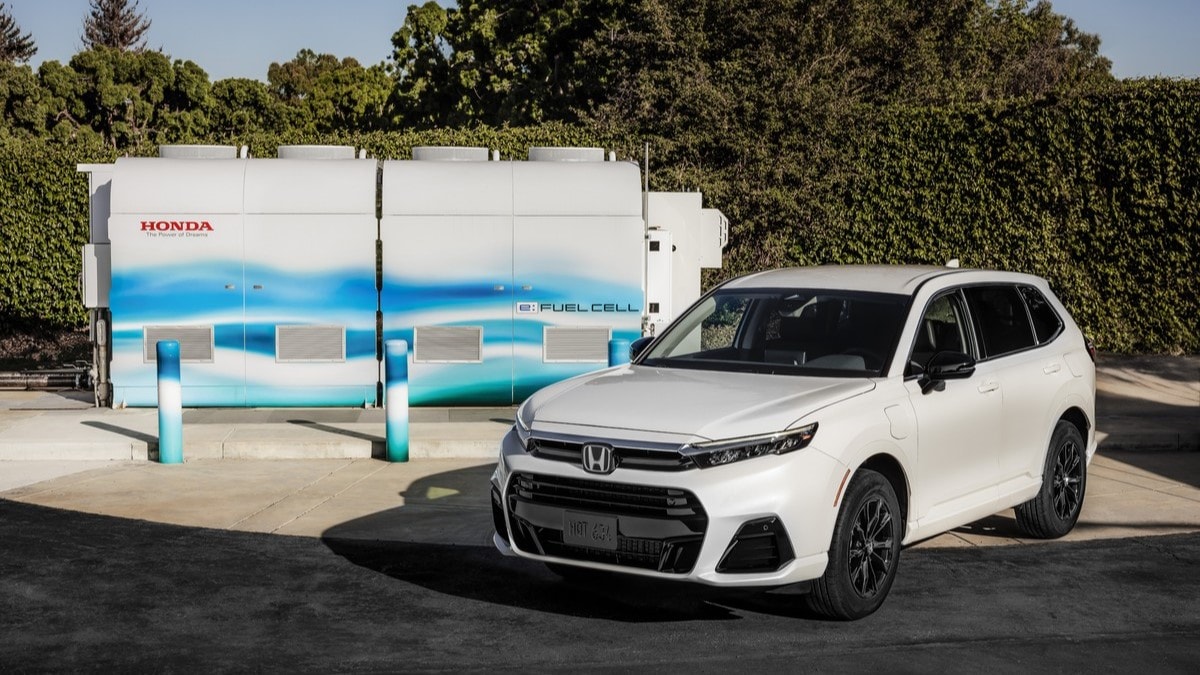Honda this week revealed an all-new hydrogen-fuel-cell-powered vehicle based on a common Honda model and named by a Sesame Street monster too hyperactive to focus long enough to film a scene. Meet the 2025 Honda CR-V e:FCEV.
Different From Other Fuel Cell Vehicles
Most of the world’s cars are powered by internal combustion, with an ever-increasing number using electricity to move. But a handful of automakers have a side bet on the fuel of the future. Honda, Hyundai, and Toyota all sell hydrogen-powered cars in very small numbers.
Fuel cell cars are electric cars with extra steps. They use a fuel cell to convert chemical energy in hydrogen – the universe’s most abundant element – into electricity. That electricity then powers motors that drive the car.
Hyundai and Toyota build unique cars powered by fuel cells that they don’t sell in any other form. There’s no gas-powered Toyota Mirai or Hyundai Nexo.
Honda will instead sell a fuel cell-powered version of a vehicle you probably see around you in traffic most days. The CR-V e:FCEV has the body and many of the components of a Honda CR-V small SUV. Honda now sells the CR-V with a gasoline engine, a hybrid system, or a hydrogen fuel cell.

A Stealth Fuel Cell Car
The H1-powered CR-V will look slightly different from more common versions. It has a smaller grille and a larger lower air intake. A slightly redesigned liftgate and unique 18-inch wheels mean an eagle-eyed gearhead might spot the difference. But one could likely slip past you in traffic without you realizing it was weird.
Inside, there are no differences worth mentioning. It’s based on the high-end Touring model of the CR-V, so you get creature comforts like a heated steering wheel and heated front seats, and “bio-based leather seat upholstery,” a phrase that seems to imply that most leather doesn’t come from animals or plants.

Not Solely Dependent on Hydrogen
Honda takes a different approach to propulsion, too. The CR-V e:FCEV is the only hydrogen-powered car for sale today that you can plug into a wall outlet. It drives up to 29 miles on electricity alone before using hydrogen.
It can travel 270 miles in total before refilling and/or recharging.
The motor is good for 174 horsepower, all of it sent to the front wheels. That’s less than the 190 hp of gas-powered HR-Vs or the 204 hp of hydrogen models. But the high-torque nature of electric motors should make performance more than adequate.

More Questions About Hydrogen Than The CR-V e:FCEV
As with the other two hydrogen-powered vehicles, Honda’s fuel cell model will be available only in California. And it may not be sold at all. Honda hasn’t announced pricing yet; rather the company says the CR-V e:FCEV will be available for lease later this year.
Automakers limit their hydrogen-powered cars to California dealers because all of America’s hydrogen refueling stations are found in the Golden State.
The number of those stations is shrinking rapidly. There were only 52 in the state last year. The largest operator of publicly available hydrogen stations in the U.S., True Zero, closed 10 in 2023. Shell recently closed another seven. The Department of Energy still lists 52 on its website but includes all 17 of the closed stations in that count.
Shell cited “hydrogen supply complications and other external market factors” for its decision. That makes us question how long the remaining stations can stay open without a major change to the hydrogen supply.
The rapidly shrinking number of refueling sites might be behind massive discounts from Hyundai and Toyota. Buyers today can get a $33,000 cash discount on the Nexo and a $40,000 discount on some Mirais. That could indicate that automakers are committed to keeping their hydrogen projects going as research. But it could equally be a sign of a fire sale as they acknowledge the fuel’s window in the U.S. is closing fast.








